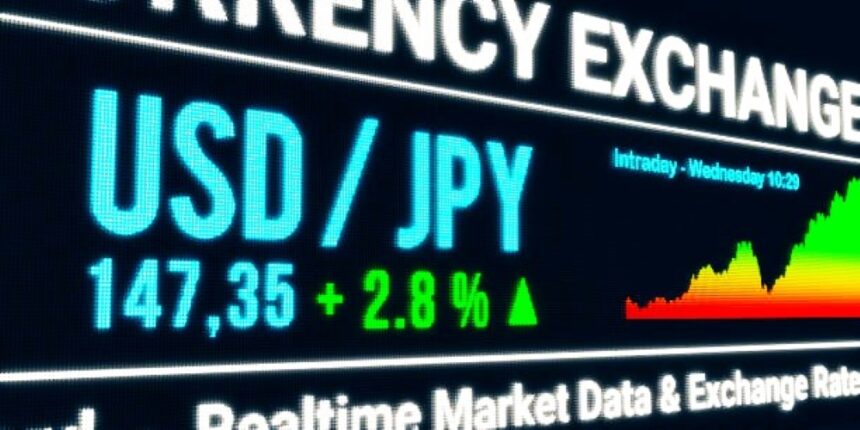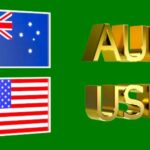Japanese Yen Momentum Builds on BoJ Policy Shift.
The Japanese Yen (JPY) extended its rally on Wednesday, with the USDJPY currency pair plunging below the psychologically important 144.00 level. The move comes amid growing expectations that the Bank of Japan (BoJ) will continue raising interest rates in 2025, a rare hawkish pivot after decades of ultra-loose policy. Deputy Governor Shinichi Uchida’s remarks to parliament earlier this week reaffirmed this outlook, signaling that the central bank sees inflation staying near its 2% target and possibly accelerating again.
BoJ policymakers have hinted at additional hikes if economic conditions remain supportive. This signals a continued divergence from the Federal Reserve, where market participants are increasingly pricing in multiple rate cuts by the end of 2025.
Divergent Policy Paths Weigh on Dollar
While the BoJ pivots toward tightening, the Federal Reserve appears to be heading in the opposite direction. A string of soft economic data, including the US Consumer Price Index (CPI), Producer Price Index (PPI), and monthly Retail Sales, has intensified bets that the Fed will initiate rate cuts in the coming quarters. Investors now expect the Fed to cut rates at least twice in 2025, with some even anticipating a third cut if economic conditions worsen.
This divergence in monetary policy between the US and Japan is exerting downward pressure on the USD/JPY pair. The Yen, already bolstered by safe-haven flows, is now being supported by the relative yield advantage as Japan’s interest rates rise while US yields fall.
Safe-Haven Flows Boost Japanese Yen Amid Global Tensions
Geopolitical developments have added another layer of support for the Yen. Renewed tensions between the US and China over semiconductor restrictions and chip industry sanctions have created uncertainty in global markets. China responded angrily this week to US warnings against using Chinese-made chips, calling it “typical unilateral bullying” and accusing Washington of disrupting the global semiconductor supply chain.
These tensions have triggered a flight to safety, with the Japanese Yen benefiting due to its traditional safe-haven appeal. The global risk-off sentiment is pushing investors toward safer assets, particularly as US tech firms face export restrictions and global chip demand shows signs of slowing.
Trade Optimism Lends Additional Support
Apart from rate differentials and geopolitical risk, the Japanese Yen is also finding support from trade-related optimism. Japanese and US officials are currently engaged in a third round of ministerial-level trade talks in Washington. The discussions, attended by Japan’s Trade Minister Ryosei Akazawa, US Trade Representative Jamieson Greer, and Treasury Secretary Scott Bessent, are reportedly progressing well.
While details remain scarce, reports suggest the US is pressing for a speedy conclusion to the negotiations. A successful trade deal between the two nations could boost Japanese exports and investor sentiment, further supporting the Yen and dampening the appeal of the greenback.
Japan’s Trade Deficit a Mixed Signal
In an otherwise Yen-supportive backdrop, Japan’s latest trade balance data presents a slight caveat. Government figures showed a surprise shift from a ¥559.4 billion surplus in March to a ¥115.8 billion deficit in April. The slowdown was attributed to weakening global demand—especially from the US—and a slower-than-expected decline in imports.
However, the dip in imports is being partially offset by improved domestic consumption, thanks to robust wage growth from springtime labor negotiations. While a shrinking trade surplus may seem bearish for the Yen, it is overshadowed by stronger macro forces like monetary tightening and geopolitical risk-off sentiment.
BoJ Hints at Persistent Inflation
Deputy Governor Uchida’s statement earlier this week further anchored expectations of a policy shift. He noted that inflation is likely to re-accelerate and stabilize around the 2% target. This is a significant departure from Japan’s deflationary past and gives the BoJ greater scope to normalize policy.
Moreover, last week’s Summary of Opinions from the BoJ confirmed that a majority of policymakers still see room for further rate hikes. As inflation expectations solidify and wage growth becomes more entrenched, the likelihood of another hike in the second half of 2025 has increased significantly.
Fed Outlook Deteriorates After Weak Data
Meanwhile, the Fed’s policy outlook continues to sour. Last week’s inflation readings showed cooling price pressures, reinforcing the case for rate cuts. The CPI rose less than expected, and the PPI, a leading indicator of inflation, fell for the first time in months. Retail sales also disappointed, raising concerns about the health of the US consumer.
Fed officials have started acknowledging the economic uncertainty. San Francisco Fed President Mary Daly expressed concerns about the long-term impact of the Trump administration’s trade and immigration policies. Similarly, the Cleveland Fed President warned of weakening business sentiment and slower investment decisions due to policy uncertainty.
Trump’s Trade Policies Add Headwinds
Donald Trump’s second-term economic agenda is already making waves, even before its full implementation. The recent round of import tariffs and proposed trade restrictions are beginning to weigh on sentiment, especially in export-driven sectors. This has implications for both US inflation and growth, as tariffs raise costs and disrupt supply chains.
These policies are also beginning to affect trade partners, including Japan. While the trade talks in Washington may resolve some issues, the broader trend of deglobalization and protectionism could drag on global growth, adding to the Fed’s dilemma and strengthening the case for rate cuts.
Global Semiconductor Tensions Escalate
Another major risk factor is the ongoing semiconductor dispute between the US and China. On Monday, China accused the US of undermining their trade deal by singling out Huawei in a new industry warning. This prompted a fierce response from China’s Commerce Ministry, which said the US actions represent unilateral protectionism.
This development threatens the stability of the global chip supply chain and has added to the demand for safe-haven assets like the Yen. Investors fear that if the dispute escalates, it could severely disrupt technology supply chains and further weaken global growth prospects.
Japanese yen Outlook: More Downside Likely
With so many macro forces favoring the Japanese Yen, analysts expect further downside in the USDJPY pair. The break below 144.00 is technically significant and may open the door to further declines toward the 142.50 and 141.80 support levels in the near term.
Unless there’s a sharp reversal in Fed policy expectations or a major breakthrough in US-China trade talks, the bias remains firmly in favor of the JPY. The BoJ’s hawkish pivot, coupled with geopolitical uncertainty and a weakening US economic outlook, is likely to keep the Yen well-supported in the weeks ahead.







